A “Once-In-A-Lifetime Experience” in Italy
By Dave Block ’93
A mechanical engineering major of Italian descent and long fascinated by ancient Roman civilization, Melissa Lynskey ’17 was intrigued by the thought of taking a short-term study abroad course in Italy.
Once she read that students would get hands-on experience with the engineering involved in making some of the nation’s finest products, her interest increased dramatically.
The cost of taking a course abroad over the January break, however, was daunting. Help came in the form of the Douglas Prusoff ’12 Student-Athlete Study Abroad Fund, for which Lynskey is “extremely grateful.”
“The stipend I received to go on this trip was so important to me,” says Lynskey, a forward on the women’s soccer team. “I wouldn’t have been able to have this once-in-a-lifetime experience without the help, and I can’t thank Douglas Prusoff enough.” (See “Providing Passports for Study Abroad” for more on study abroad scholarships.)





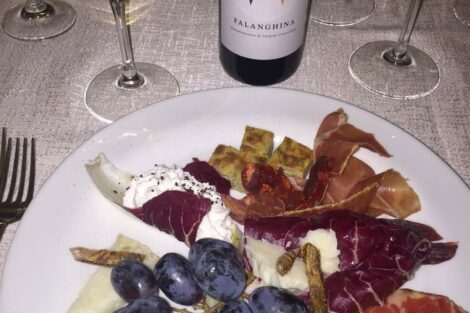


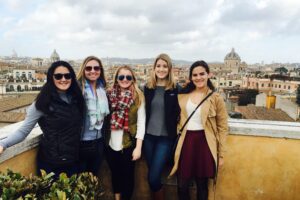
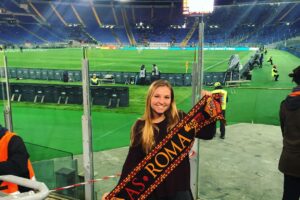
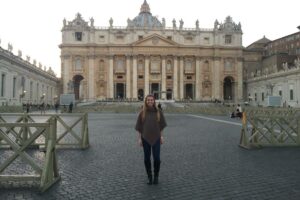
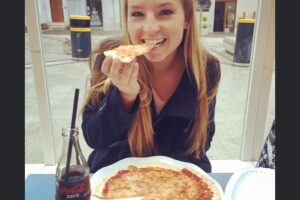

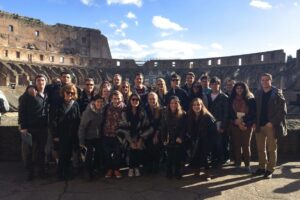
The class, Global and Societal Context: A Taste of Italian Engineering, was led by Polly Piergiovanni, professor of chemical and biomolecular engineering, and Josh Smith, associate professor of mechanical engineering. Students learned through lectures, assignments, site visits, and hands-on experiences such as making ravioli, biscotti, and some local specialties, and testing out various stick shifts at a Fiat plant. As they spent time in several cities, students grappled with a range of topics, including:
- the structural engineering of the ancient Romans
- chemical engineering processes involved in making wine, olive oil, pasta, chocolate, and mozzarella
- the engineering to reinforce, clean, and preserve ruins and artifacts
- the conflict between preserving the country’s past and building and expanding to prepare for future growth
- the economic struggles and supply logistics of small villages as their population declines
One assignment focused on Carunchio, a small town in Abruzzo whose younger residents are moving to big cities in search of jobs. The town struck a deal allowing an energy company to use trees on its periphery, but excess hot water is generated by the process. After the mayor spoke to the class about the issue, students worked in groups to develop and present engineering and economic solutions to use the hot water and also stem the population flight.
After spending a week in Rome learning about its ancient history, Lynskey was “completely awestruck” by a visit to Pompeii. Whereas most original structures in Rome have been destroyed to rubble or converted to another use, Pompeii was well preserved through the volcanic eruption of Mount Vesuvius in 79 A.D.
“When I arrived at Pompeii, it really took my breath away,” Lynskey says. “We got to see the original art work that was on their walls, walk on the exact same streets they had built, and go inside the same shops and houses that they lived in. I felt like it was there at Pompeii that I truly could understand the greatness of the Roman Empire.”
There were many other highlights. The class visited a foundry that made bells for the Vatican, then went to the Vatican a week later to hear them ring. The students saw the Colosseum, Pantheon, Spanish Steps, Trevi Fountain, Villa Borghese, Roman Forum, Palatine Hill, and Trajan’s Market. They attended a Roma vs. Milan pro soccer game, heard a concert of medieval music, and visited stunning cathedrals.
All of which piqued a desire in Lynskey to travel more.
“This was the first time I was able to travel out of the country, and I loved learning and experiencing other cultures,” she says. “I am already excited for the next opportunity I have that allows me to travel or even potentially work abroad.”
1 Comment
Comments are closed.